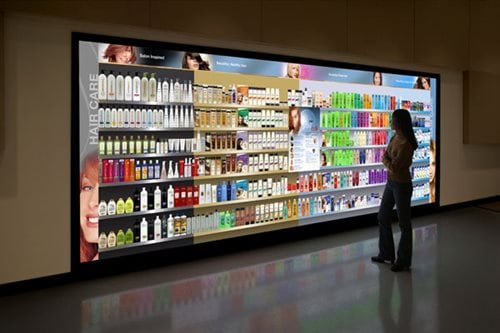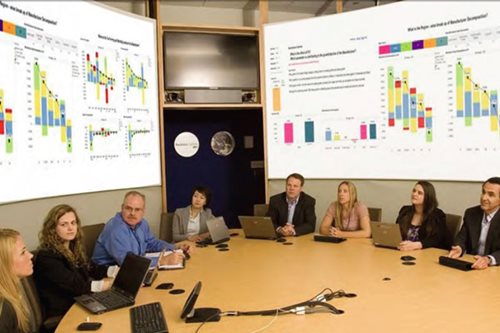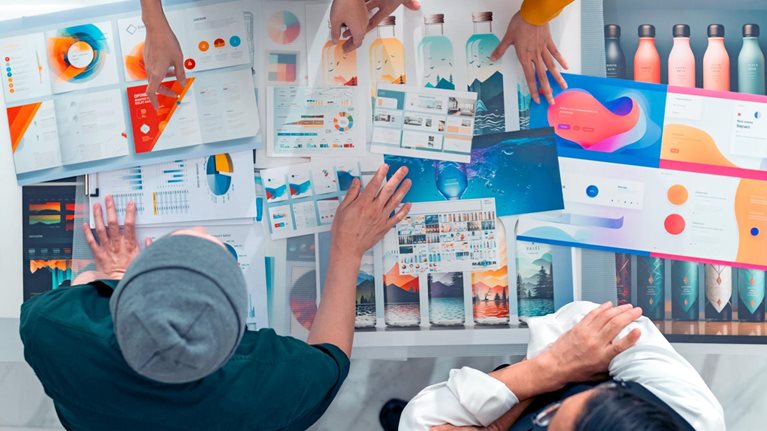Robert McDonald is a CEO on a mission: to make Procter & Gamble the most technologically enabled business in the world. To get there, the 31-year company veteran and former US Army captain is overseeing the large-scale application of digital technology and advanced analytics across every aspect of P&G’s operations and activities—from the way the consumer goods giant creates molecules in its R&D labs to how it maintains relationships with retailers, manufactures products, builds brands, and interacts with customers. The prize: better innovation, higher productivity, lower costs, and the promise of faster growth.
McKinsey’s Michael Chui and Thomas Fleming recently sat down with McDonald at P&G’s Cincinnati headquarters to talk about the nature and progress of the company’s digitization initiative, as well as its implications for P&G’s people and culture. An edited summary of the interview follows.
In the accompanying sidebar “‘My leadership philosophy’,” McDonald reflects on how his experiences as a US Army Airborne Ranger inform his approach to leading P&G.
Real-time insights
Our purpose at P&G is to touch and improve lives; everything we do is in that context. With digital technology, it’s now possible to have a one-on-one relationship with every consumer in the world. The more intimate the relationship, the more indispensable it becomes. We want to be the company that creates those indispensable relationships with our brands, and digital technology enables this.
One way is through consumer feedback. In 1984, when I was the Tide brand manager, I would get a cassette tape of consumer comments from the 1-800 line and listen to them in the car on the way home. Then, back at the office, I’d read and react to the letters we’d received. Today that’s obviously not sufficient—you’ve got blogs, tweets, all kinds of things.
And so we’ve developed something called “consumer pulse,” which uses Bayesian analysis to scan the universe of comments, categorize them by individual brand, and then put them on the screen of the relevant individual. I personally see the comments about the P&G brand. This allows for real-time reaction to what’s going on in the marketplace, because we know that if something happens in a blog and you don’t react immediately—or, worse, you don’t know about it—it could spin out of control by the time you get involved. The technology also lets us improve things that are working. For example, we’re rolling out a product called Downy Unstopables, a fragrance addition you can add to your wash, and the real-time comments from consumers about the product’s characteristics are helping us figure out how best to join in the discussion through our marketing efforts.
From factory to shelf
From an operational standpoint, we also believe that to be successful we’ve got to continue to improve productivity, and being digitally enabled allows for that as well. So we’re digitizing our operations everywhere—from our manufacturing plants to the stores where consumers purchase our products. We believe digitization represents a source of competitive advantage.
In our manufacturing plants, for example, we have systems that allow people to use iPads to download data off the production line in real time and communicate that to a place where we roll the data up. We’re not there yet, but we envision a system where I could literally see, on my laptop, any product at any moment as it goes through the manufacturing line of any one of our plants. And what I’d love to be able to do is see the costs of that product at the same time. It’s challenging because accounting systems aren’t designed today for operations—they tend to look backward—but we’re working on integrating our operational system with the financial system to move in that direction.
In transport and logistics, we created a digitally enhanced operational program we call Control Tower that lets us see all the transportation we’re doing: inbound, outbound, raw materials, finished product. We’re probably the second- or third-largest user of trucks in the United States, and through this technology we’ve been able to reduce “deadhead” movement1 by about 15 percent. This reduces costs and carbon monoxide. In circumstances where we use distributors, a similar interface, called Distributor Connect, lets us link directly with them and help them run their business. This benefits all of us by improving service and reducing inventory across the supply chain.
We want to be digitally connected to retailers too. For example, we use and support GDSN,2 which is basically a standardized data warehouse that allows us to do commerce with our retail partners in a totally automated way, with no human intervention. The industry association GS1 did a study a few years ago that found that 70 percent of orders between retailers and suppliers had errors. But if everyone used a common data warehouse like GDSN—where the data are kept dynamically correct—that number goes down to virtually zero, and it saves millions of dollars in doing commerce together.
Another thing we do is to use our scale to bring state-of-the-art technology to retailers that otherwise can’t afford it. Imagine a small store in the Philippines, for example—a country where I used to live. We can provide sophisticated ordering applications to help people there run their businesses better than they would be able to otherwise. We have mobile-phone applications that allow retailers to order from us wirelessly or, if they don’t have a wireless capability, to order when they go back to their office and set the phone in a base. It’s very easy to use.
We also have performance standards that retailers in developing markets can visualize on their phones. For example, we believe you should arrange your store in a certain way to maximize consumer sales. If you have a store that partners with P&G on this, you can call up the performance standards on your phone, hold it up, look around your store, and compare it with what you see. Eventually, I want to be able to take a picture of the shelf, have it digitally compared, and then automatically send action steps back to the retailer to help rearrange the shelf for maximum consumer sales. That’s where we’re going.
In fact, some applications like these will probably come back to the developed world as improvements because they’ll be simpler—there’s no question that progress will be accelerated by the leapfrogging of technology. Inevitably, everything’s got to be usable on the smallest, cheapest device possible because that’s what’s going to get the broadest distribution in a developing market.
Digitizing innovation
Data modeling, simulation, and other digital tools are reshaping how we innovate. The way we used to do innovation research required a lot of work and time setting up consumer panels—you need the right distribution of races, ages, and so forth to make them representative. Now, with the amount of data we have available, the “n” is so large that by definition we can immediately have a representative group.
When you design a disposable diaper the traditional way, for example, by the time you get to the point where you make a prototype, the prototype itself has cost thousands of dollars, if not more, and it was all made by hand. Now, using modeling and simulation, you can go through thousands of iterations in seconds. The key is that you’ve got to have the data. So the advantage for P&G is our scale. We have operations in around 80 countries, our products are sold in almost every country, and we touch more than four billion consumers every day. Imagine all those data points. We can literally fit any virtual diaper to any baby anywhere in the world.

P&G’s ‘virtual wall’ uses multiple projectors to simulate store shelves for faster consumer testing.
We’re even digitizing the creation of molecules. For example, in the research and development for our new dishwashing liquid, we used modeling to predict how moisture would excite various fragrance molecules so that throughout the dishwashing process you get the right fragrance notes at the right time. We did that all virtually.
I think that digital technology will even help us identify new service components to our consumer products that wouldn’t otherwise be immediately obvious. For example, say you’re a consumer concerned about the environment. You go to one of our packages and photograph the QR3 code. We then could download for you all the ingredients in the product and their biodegradability—or tell you where the product was produced, the quality of the water, or how we’ve reduced carbon emissions in the plant. We can’t do that today, but it’s an aspiration.
Improve data at the source
P&G employees have a “cockpit” interface on their computers that they help design. It has certain tolerances for the metrics that are important to them. When we go outside those tolerances, either negatively or positively, an alarm goes off. Then we can click down and understand what’s going on and react to it, because we feel that time compression—or operating in real time—is a competitive advantage.
Similarly, every Monday morning we have a meeting with our leadership team all over the world—physically and virtually—where we review the business for the previous week and click down on all this data. And everyone signs up for the principles behind this—it’s real time and continuous; it gives us the ability to click down to find causality, make decisions, and then move on.
As we apply those principles each week, the challenge becomes the data source. I’ll use the Philippines again as an example. If a company we buy syndicated data from goes into stores in the Philippines once every two months and does a handheld questionnaire audit, then it doesn’t matter if we meet every Monday or not. Our data’s not going to be very good. So we’ve been working with all our data partners to help them understand that our need is for real-time data. For us it’s really constraint theory—understanding where the constraint in our data is and pushing it all the way to the data source. Then, change the data source.
For companies like ours that rely on external data partners, getting the data becomes part of the currency for the relationship. When we do joint business planning with retailers, for example, we have a scorecard, and the algorithm is all about value creation. Getting data becomes a big part of the value for us, and it’s a big part of how we work together. We have analytic capabilities that many retailers don’t have, so often we can use the data to help them decide how to merchandise or market their business in a positive way.
It would be heretical in this company to say that data are more valuable than a brand, but it’s the data sources that help create the brand and keep it dynamic. So those data sources are incredibly important. Therefore, we go to the extreme to protect whatever consumer data we get. It’s a board-level enterprise risk-management issue for us. We have very clear firewalls between one retailer and another and strict policies—for example, about how long a “cooling off” period you need to have when working on projects with different retailers. All of this comes with our strategy of being the most digitally enabled company in the world. We can’t do that without being an industry leader on data security and privacy.

P&G’s high-tech conference room (dubbed Business Sphere) allows company leaders to harness massive amounts of data to make real-time business decisions.
The digital workforce
When I started with P&G, in 1980, almost nothing was digital. Back then, our Management Systems Division—as we called it then—had mainframe computers, but our people did more work on phone systems than on computers. And whenever I would get together with them, I would ask, “How many of you have coded BCD?”4 or, “Have you ever done a Monte Carlo simulation?” Nobody would raise a hand. They didn’t have those kinds of skills.
More than two decades later, as vice chairman of global operations, I and my colleague Filippo Passerini, who today is the CIO of P&G,5 began to put together some very clear strategies to hire people with different skills. We needed people with backgrounds in computer modeling and simulation. We wanted to find people who had true mastery in computer science, from the basics of coding to advanced programing. When you’ve actually done a simulation, you truly realize the importance of the data; it’s classic “garbage in, garbage out.”
We’ve come a long way toward meeting our goals today, but we still have further to go. For example, we established a baseline digital-skills inventory that’s tailored to every level of advancement in the organization. We have a training facility to make sure that if you’re in a particular area, you’re competent on the systems for that area. This goes for senior managers too; we have an area in the facility where we can pull the curtains, so to speak, and work with senior managers privately so we don’t embarrass anyone. But we’ve got to have the standards for everyone because otherwise we’ll dumb the organization down to the lowest common denominator.
Ultimately, though, P&G has been pretty good about hiring for analytical thinking. We hire very good people and then train them. I remember the day I joined the company and one of the managers a few levels up said, “Throw away your MBA textbooks and we’ll teach you; we’ll give you another MBA.” And I think that’s still practical and relevant today. Nonetheless, analytical-thinking skills have become even more important to this company. We need to come up with the ideas to innovate, and those innovations are always informed by data.


